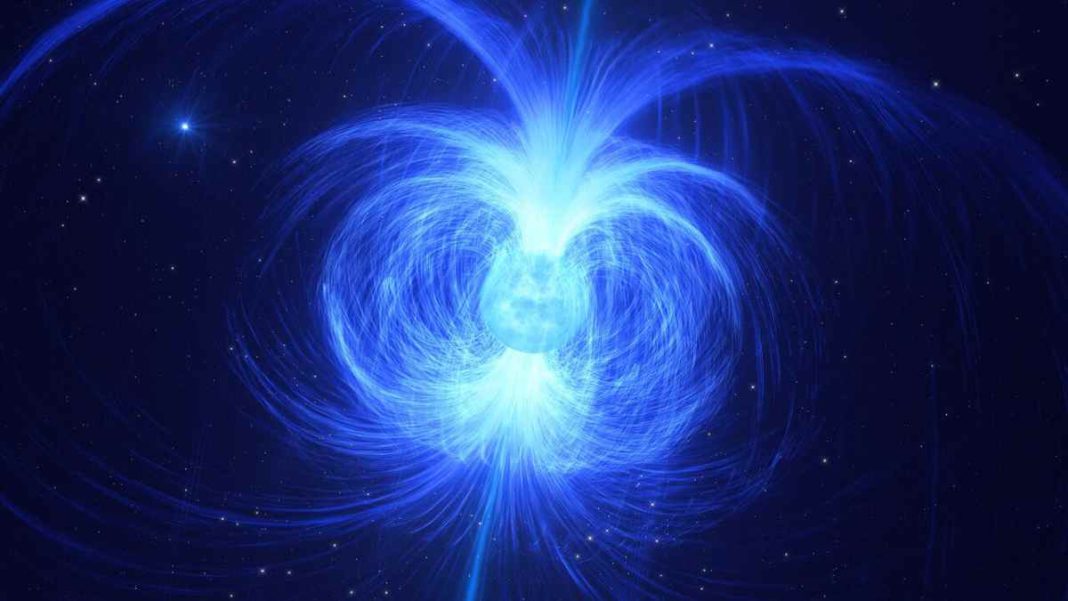BELGIUM: A team of researchers has unveiled a captivating revelation—a living star on the brink of evolving into a magnetar, a deceased star known for its super-dense core and mind-boggling magnetic field.
Magnetars, characterized by magnetic fields of staggering intensity, have long intrigued scientists. However, the exact mechanisms driving their formation and the origins of their colossal magnetic power have remained elusive.
Now, a group of astronomers led by Tomer Shenar from the University of Amsterdam has pushed the boundaries of our knowledge, offering a tantalizing glimpse into the enigmatic nature of magnetars.
At the heart of this breakthrough is HD 45166, a star that has held scientists in thrall for a century. This star, nestled in the Monoceros constellation roughly 3000 light-years away, stands on the precipice of a remarkable transformation. With a magnetic field registering an astonishing 43,000 gauss, HD 45166 has set a new benchmark as the most magnetically charged massive star documented to date.
Pablo Marchant, an astronomer from KU Leuven’s Institute of Astronomy in Belgium and co-author of the study, marvels at the revelation, “The entire surface of the helium star has a magnetic field almost 100,000 times stronger than Earth’s.”
This celestial marvel, despite its living status, is projected to morph into a magnetar—an inert star boasting a core of remarkable density and a magnetic field that could reach a staggering 100 trillion gauss. This process is anticipated to occur as the star succumbs to the relentless force of its own gravity.
HD 45166’s unique attributes have led co-author Julia Bodensteiner, an ESO (European Southern Observatory) astronomer based in Germany, to affectionately dub it the “zombie star.” She jests that the term not only reflects the star’s extraordinary nature but also humorously alludes to the captivating hold it has on Tomer Shenar, the lead astronomer.
What’s even more fascinating is the revelation about HD 45166’s origin. In a departure from the typical trajectory, wherein helium stars evolve from red supergiants, this star appears to have formed through the merger of two smaller, helium-rich stars. This discovery challenges existing assumptions and offers a tantalizing glimpse into the complexity of stellar evolution.
In sum, the findings from this research stand poised to rewrite the narrative of HD 45166’s journey. A star once shrouded in mystery is now set to become a cornerstone of our understanding of magnetars—a cosmic phenomenon known for its unprecedented magnetic strength.
Also Read: NASA’s Parker Solar Probe Achieves Record-Breaking Speed on Route to Venus Flyby



